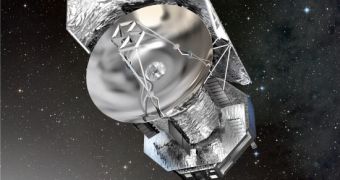A group of astronomers has recently determined that the water vapor spacecraft were detecting the in upper atmosphere of Saturn come from the ice-covered moon Enceladus. The source of these vapors has been sought-for for many years, but to no avail.
Recently, experts managed to get a breakthrough when they used the European Space Agency’s (ESA) Herschel Space Observatory. The instruments aboard the world’s most advanced telescope were able to identify Enceladus as the source of the contamination.
One of the most impressive things researchers learned about the moon is that it produces vast plumes of organic material and water vapor as it moves through its orbit. The chemicals come out of tiger stripe-like structures at its south pole.
The NASA Cassini spacecraft has been analyzing these phenomena for many years and these investigations led experts to assume that a liquid ocean may swirl beneath miles of hard ice.
But, thus far, no one even considered the idea that these water vapors may be the ones that accumulate in the gas giant’s atmosphere. For more than 24 years, astronomers have been trying to get to the bottom of this mystery.
The new discovery makes Enceladus the only moon in the solar system that is capable of influencing the atmosphere of its parent planet. This is remarkable, since the Moon, for example, has little to no effect on Earth’s atmosphere.
According to available data, it would appear that Enceladus is spewing out as much as 250 kilograms of water vapor per second. These vapors then go on to accumulate in a doughnut-shaped torus around Saturn.
“There is no analogy to this behavior on Earth. No significant quantities of water enter our atmosphere from space. This is unique to Saturn,” says researcher Paul Hartogh.
The expert is based at the Max-Planck-Institut für Sonnensystemforschung, in Katlenburg-Lindau, Germany. He was also the leader of the new research effort.
“Herschel has proved its worth again. These are observations that only Herschel can make,” ESA Herschel project scientist Göran Pilbratt says.
“ESA’s Infrared Space Observatory found the water vapou in Saturn’s atmosphere. Then NASA/ESA’s Cassini/Huygens mission found the jets of Enceladus. Now Herschel has shown how to fit all these observations together,” the expert goes on to say.

 14 DAY TRIAL //
14 DAY TRIAL //